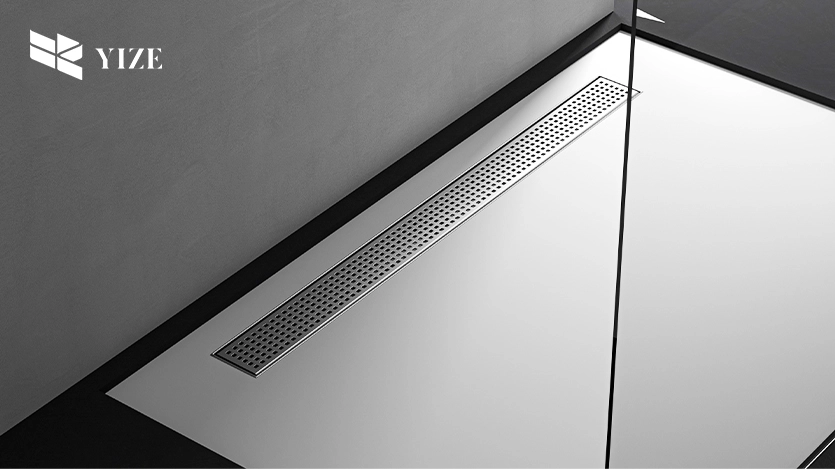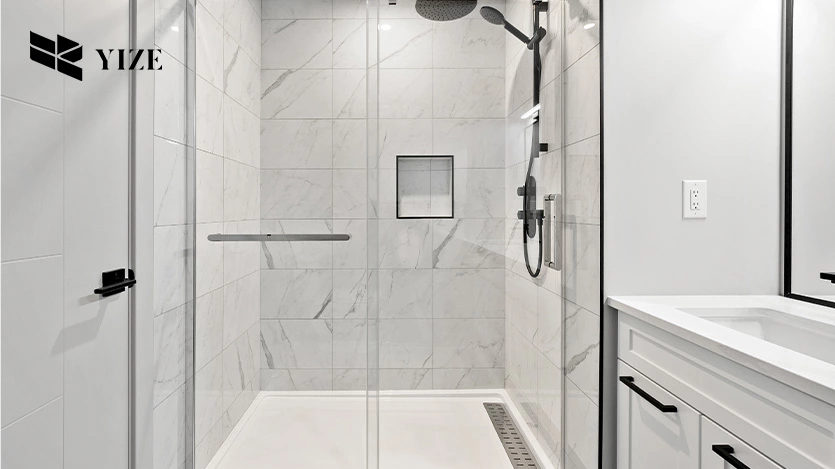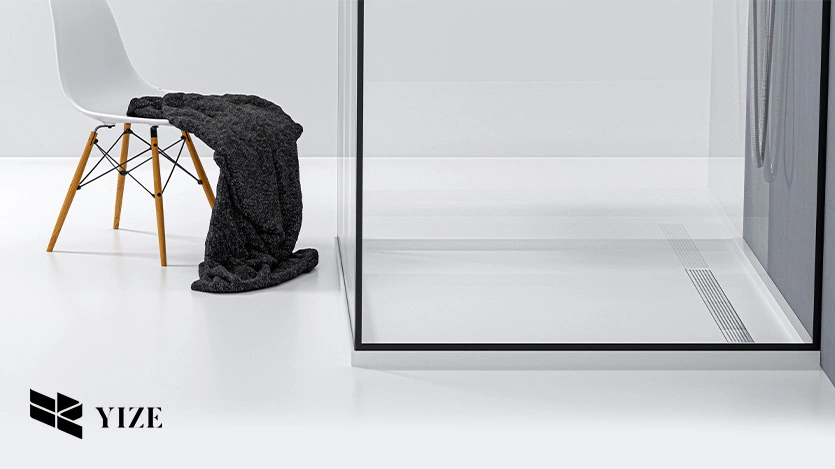We can all agree that it can be tiring to find the mystery puddles after every shower or constantly renovating the bathroom. Some maintenance issues can be frustrating as well, especially since one small but mighty component can make or break our experience with a shower drain.
You might not think about shower drain replacement that much, but it actually helps keep your bathroom clean, dry, and working right. If your floor starts draining slowly or smells kind of weird, chances are your shower drain’s the one causing the problem.
I. 5 signs it’s time to replace your shower drain
In this article, let’s take a look at the 5 major signs it’s time to replace your shower drain so you can avoid bigger (and smellier) problems later.

1. Water is pooling in the shower floor
If water’s taking too long to drain and you’re left with a mini swimming pool on your shower floor, your drain’s probably clogged or getting rusty inside. And yep, it gets worse—slow drains can lead to mold, mildew, and even damage the floor under your shower if ignored too long.
There are instances that water pooling in the shower floor only needs a quick clean. This is the part where you lift up the drain and remove all the dirt inside. But if that didn’t fix the problem, it might be the time to get a shower drain replacement.
2. Unpleasant odors that won’t just go away
Is there a bad smell lingering in your shower even after a good clean? If yes, that’s a huge red flag. You see, the soap scum, hair, and other debris can build up in the shower drain over time. This can cause bacteria to grow which can also result in some health problems if not resolved immediately. As we’ve mentioned, if the odor stays even after a quick clean, this might mean that your shower drain is damaged or hosting mold.
3. There’s visible rust or corrosion
It’s ugly and unpleasant to have a corroded or rusted shower drain, and it can also break apart the components or become hazardous over time. These things happen because metal parts wear down as you use it, especially if your house has a humid temperature. If you see flakes or feel rough edges, you’re better off replacing the entire drain with a corrosion-resistant option.
4. Leaks underneath the shower

Did you know that one of the most costly issues of a failing shower drain is a hidden leak? More so, if water is dripping into the floor below or the ceiling underneath it, the drain seal might be broken.
And the worst part? You might not notice anything until stains or a musty smell start to show up, by then, the damage could already be done. That’s why spotting early signs and replacing a faulty shower drain is not just maintenance, it’s prevention.
5. Outdated or poor design
Even if your drain is working okay, an outdated or poor design might also be a reason for an upgrade. Old drains can look out of place in a nice, modern bathroom. Some of them are also harder to clean and get dirty faster.
Newer shower drains aren’t just better looking, they’re smarter, too. Many have flat, modern designs that match your bathroom floor and built-in covers that catch hair before it clogs your pipes.
So, upgrading your drain isn’t just about fixing problems, it can also make your bathroom look and work better. Also, if you have the extra budget, go for it! You might be saving more money than you think so.
II. Choosing the right shower drain replacement

So you’ve decided it’s time to replace your shower drain; great call! The first practical thing to remember is: if you’re getting a new shower drain, don’t just grab the first one you see. Here are some key things you should look out for:
First, think about material. Stainless steel is super strong and won’t rust over time, while ABS plastic is lightweight and also very durable. Both are solid options and can last for years.
Next, check the drain type. Do you want a classic center drain? Or maybe you’d prefer a sleek linear drain that runs along the edge of the shower? Tile insert drains are another cool option, they let you “hide” the drain by placing matching tile on top for a seamless look.
Also, don’t forget about compatibility. You’ll want to make sure the new drain fits with your current plumbing setup. If you’re unsure, asking a plumber for advice is always a smart move.
Finally, look for special features. Some drains come with built-in hair traps (a lifesaver for keeping pipes clean), anti-odor seals, or grates you can easily remove for cleaning.
If you need help choosing, YZDrain has a variety of modern, high-quality options that not only work great but also look stylish in any bathroom.
FAQs About How to Replace a Shower Drain
Q1: How long do shower drains last?
Usually 10–20 years if it’s installed right. But cheap drains or bad plumbing can make it break faster.
Q2: Can I replace it myself?
Yes, if you know your way around plumbing. If not, better call a pro—less stress, no leaks.
Q3: How much does it cost?
DIY ones can be $30–$100. If you get a plumber, it might cost around $150–$300 or more.
Q4: Which drain is easiest to clean?
Try linear or tile drains with pop-off covers—they’re super easy to wipe and keep clean.
Q5: How do I know if it’s leaking?
Look for wet spots on ceilings below, weird smells, or loose tiles. Big clues your drain’s got issues.
